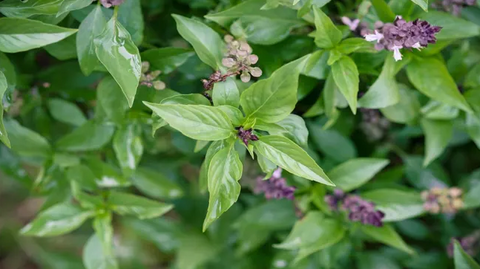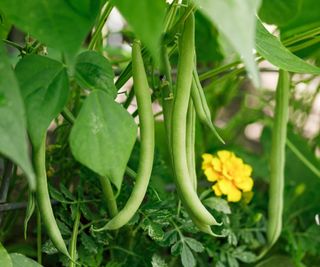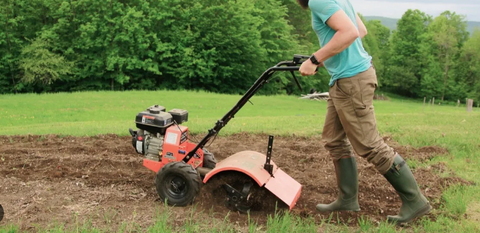Welcome to the world of vegetative gardening, where the joys of nurturing plants and harvesting your own produce await. Whether you're a novice or a seasoned gardener, embarking on this green journey promises an enriching experience filled with growth and abundance. The following content also has some reference value for raised garden beds.
Why Vegetative Gardening? Exploring the Benefits of Growing Your Own Vegetables
Beyond the satisfaction of cultivating your own food, vegetative gardening offers a plethora of benefits—from promoting sustainability and self-sufficiency to fostering a deeper connection with nature. Let's dive into the myriad reasons why embracing vegetative gardening is a rewarding endeavor.
Understanding Vegetative Gardening
What is Vegetative Gardening?: An Overview of the Concept
Vegetative gardening centers around the propagation and cultivation of plants through vegetative methods, such as stem cuttings, division, or grafting. Unlike generative gardening, which relies on seeds for propagation, vegetative gardening allows gardeners to replicate desirable traits and ensure genetic consistency in their plants.
Vegetative vs. Generative Gardening: Understanding the Difference
While generative gardening focuses on growing plants from seeds, vegetative gardening involves propagating plants from vegetative parts, such as stems, leaves, or roots. This distinction allows gardeners to preserve and propagate specific plant characteristics, such as flavor, color, or disease resistance, with greater precision.

Choosing the Right Location
Finding the Perfect Spot: Factors to Consider for Your Vegetative Garden
Selecting the ideal location for your vegetative garden is paramount to its success. Consider factors such as sunlight exposure, soil quality, drainage, and proximity to water sources when choosing a site for your garden bed.
Sunlight Requirements: Ensuring Your Plants Get the Right Amount of Light
Most vegetable plants require ample sunlight to thrive, so choose a location that receives at least six to eight hours of direct sunlight per day. Orient your garden bed to maximize sun exposure, taking into account the movement of the sun throughout the day and seasonal changes in sunlight angles.
Preparing Your Garden Bed
Preparing the Soil: Tips for Creating Nutrient-Rich Soil for Your Plants
Healthy soil is the foundation of a thriving vegetative garden. Prior to planting, amend your soil with organic matter, such as compost, aged manure, or leaf mold, to improve soil structure, fertility, and moisture retention.
Choosing the Right Garden Bed: Raised Beds vs. In-Ground Planting
When it comes to garden beds, you have options. Raised beds offer improved drainage, better soil aeration, and customizable growing conditions, making them ideal for small spaces or areas with poor soil quality. Alternatively, in-ground planting provides direct access to native soil nutrients and allows for larger planting areas.
Selecting Vegetables to Grow
Beginner-Friendly Vegetables: Easy-to-Grow Options for New Gardeners
If you're new to vegetative gardening, start with easy-to-grow vegetables that are forgiving of beginner mistakes and offer high yields. Consider planting vegetables like tomatoes, lettuce, peppers, zucchini, and herbs, which are relatively low-maintenance and well-suited to a variety of growing conditions.
Planning Your Garden Layout: Considering Space and Planting Needs
Before planting, sketch out a garden layout that optimizes space and accommodates the specific needs of each vegetable variety. Group plants with similar water, sunlight, and soil requirements together to maximize efficiency and simplify maintenance tasks.
Starting from Seeds vs. Seedlings
The Seed Debate: Pros and Cons of Starting from Seeds
Starting vegetables from seeds allows for greater variety and control over plant genetics, as well as cost savings compared to purchasing seedlings. However, seeds require more time, attention, and expertise to germinate and establish, making them better suited for experienced gardeners or those with ample time to dedicate to their garden.
The Convenience of Seedlings: Benefits of Opting for Ready-to-Plant Seedlings
Seedlings offer convenience and a head start on the growing season, allowing gardeners to skip the germination phase and transplant established plants directly into the garden bed. While seedlings may incur higher upfront costs, they offer a reliable and time-saving option for beginners or those with limited gardening experience.
Planting Your Vegetables
Planting Depth and Spacing: Guidelines for Planting Your Vegetables
Proper planting depth and spacing are critical for ensuring healthy root development, adequate nutrient uptake, and optimal plant growth. Follow seed packet instructions or spacing recommendations for each vegetable variety, and plant seeds or seedlings at the appropriate depth to promote vigorous growth and establishment.
Watering Techniques: Ensuring Proper Hydration for Your Plants
Consistent and adequate watering is essential for the success of your vegetative garden, particularly during the establishment phase. Water plants deeply and evenly, ensuring moisture penetrates the root zone, and avoid overwatering or underwatering, which can lead to root rot or dehydration.
Caring for Your Vegetative Garden
Watering Schedule: How Often Should You Water Your Vegetables?
Establishing a regular watering schedule is crucial for maintaining healthy soil moisture levels and promoting robust plant growth. Monitor soil moisture regularly, adjusting your watering frequency based on environmental conditions, such as temperature, rainfall, and humidity, to ensure your plants receive the right amount of hydration.
Mulching and Weeding: Maintaining a Healthy Garden Bed
Apply a layer of organic mulch, such as straw, shredded leaves, or grass clippings, to your garden bed to conserve moisture, suppress weeds, and regulate soil temperature. Regularly remove weeds to prevent competition for nutrients and water, keeping your garden bed tidy and free from invasive plants.
Fertilizing Your Plants
Understanding Fertilizers: Navigating the World of Plant Nutrition
Fertilizers provide essential nutrients that support plant growth, development, and productivity. Choose a balanced fertilizer formulation suited to the needs of your vegetable crops, and apply it according to package instructions to ensure proper nutrient uptake and avoid overfertilization.
Organic vs. Synthetic Fertilizers: Choosing the Right Option for Your Garden
Organic fertilizers, derived from natural sources such as compost, manure, or fish emulsion, offer slow-release nutrients and improve soil structure and microbial activity. Synthetic fertilizers, on the other hand, provide quick-acting nutrients but may have long-term environmental implications. Consider your gardening philosophy, soil health, and plant preferences when selecting fertilizers for your garden.

Managing Pests and Diseases
Identifying Common Pests and Diseases: Tips for Prevention and Treatment
Stay vigilant for signs of common pests and diseases that may affect your vegetable crops, such as aphids, caterpillars, fungal infections, and bacterial diseases. Implement cultural practices, such as crop rotation, companion planting, and good sanitation, to minimize pest and disease pressure and maintain a healthy garden ecosystem.
Natural Pest Control Methods: Eco-Friendly Solutions for Garden Pests
Harness the power of natural predators, botanical insecticides, and physical barriers to control garden pests without resorting to chemical interventions. Encourage beneficial insects, such as ladybugs and lacewings, to prey on pest populations, and use row covers or netting to protect vulnerable plants from pests.
Pruning and Trimming
Promoting Growth and Health: The Importance of Pruning Your Vegetative Plants
Regular pruning helps maintain plant health, shape, and productivity by removing dead or diseased foliage, improving airflow and light penetration, and stimulating new growth. Use clean, sharp pruners to make precise cuts, and prune plants during the dormant season or after harvesting to minimize stress and maximize recovery.
Trimming Techniques: How to Maintain Shape and Size in Your Garden
Trimming or pinching back vegetative plants helps control their size, shape, and branching pattern, promoting compact growth and preventing overcrowding. Use pruning shears or your fingertips to selectively remove stems or foliage, focusing on shaping the plant and enhancing its aesthetic appeal.
Supporting Your Plants
Staking and Trellising: Providing Support for Climbing Vegetables
Many vines and climbing vegetables, such as tomatoes, cucumbers, and beans, benefit from vertical support structures, such as stakes, trellises, or cages. Train vines to climb upward, securing them to support structures as they grow, maximize space, improve air circulation, and prevent fruit rot.
Using Tomato Cages: Keeping Your Tomato Plants Upright and Healthy
Tomato cages provide sturdy support for sprawling tomato plants, keeping them upright and preventing branches from bending or breaking under the weight of heavy fruit. Install cages around young tomato plants, and prune or train stems as needed to encourage upward growth and facilitate fruit production.
Harvesting Your Vegetables
Knowing When to Harvest: Signs That Your Vegetables Are Ready for Harvesting
Harvest vegetables at peak ripeness for optimal flavor, texture, and nutritional content. Monitor plants regularly for signs of maturity, such as color changes, size, and firmness, and harvest fruits and vegetables when they are fully ripe but before they become overripe or begin to decay.
Harvesting Techniques: Tips for Picking and Handling Your Produce
Handle harvested produce with care to minimize bruising, damage, or spoilage during harvest and transportation. Use clean, sharp harvesting tools to cut or pick fruits and vegetables from plants, and handle them gently to avoid crushing or bruising delicate tissues.
Saving Seeds for Future Planting
The Art of Seed Saving: Preserving Varieties for Future Seasons
Save seeds from your healthiest, most productive vegetable plants to preserve desirable traits and ensure genetic diversity in your garden. Allow seeds to fully mature and dry on the plant before harvesting, then store them in a cool, dry place in labeled, airtight containers for future planting.
Proper Seed Storage: Keeping Your Seeds Safe and Healthy for Next Year
Maintain seed viability and longevity by storing seeds in optimal conditions, away from moisture, heat, and light. Check stored seeds periodically for signs of mold, pests, or deterioration, and replace any compromised seeds to ensure successful germination in the next growing season.
Extending the Growing Season
Season Extension Techniques: How to Grow Vegetables Beyond the Typical Growing Season
Prolong your vegetable harvest by implementing season extension techniques, such as using cold frames, row covers, or hoop houses to protect plants from frost and extend the growing season. These structures provide insulation, shelter, and regulated microclimates, allowing you to grow vegetables year-round or in cooler climates.
Using Cold Frames and Row Covers: Protecting Your Plants from Frost
Cold frames and row covers provide passive solar heating and protection from frost, creating a warm, sheltered environment for tender vegetable crops. Position cold frames or covers over garden beds or rows, and adjust ventilation and insulation as needed to maintain optimal growing conditions for your plants.
Troubleshooting Common Issues
Dealing with Yellowing Leaves: Causes and Solutions for Common Leaf Problems
Yellowing leaves can indicate nutrient deficiencies, overwatering, pests, diseases, or environmental stress in your vegetable garden. Diagnose the underlying cause of leaf yellowing, such as nitrogen deficiency or waterlogged soil, and take corrective measures, such as fertilizing or adjusting watering practices, to restore plant health and vigor.
Addressing Soil pH Imbalance: Tips for Adjusting pH Levels in Your Garden
Maintain optimal soil pH levels for your vegetable crops by testing soil acidity or alkalinity and amending it as needed with pH-adjusting amendments, such as lime or sulfur. Ensure your soil pH falls within the ideal range for your specific plants to promote nutrient availability, root health, and overall plant growth.
Celebrating Your Harvest
Enjoying the Fruits of Your Labor: Creative Ways to Use Your Homegrown Produce
Savor the satisfaction of harvesting and enjoying your homegrown vegetables in a variety of delicious culinary creations. Get creative in the kitchen with fresh salads, soups, stir-fries, and sauces featuring your garden-fresh produce, and share your culinary creations with family and friends to spread the joy of homegrown goodness.
Sharing Your Bounty: Spreading the Joy of Gardening with Friends and Family
Share the abundance of your vegetable harvest with friends, family, neighbors, or local food banks, fostering a sense of community and goodwill. Offer surplus produce as gifts, host garden-to-table gatherings, or donate excess harvests to those in need, spreading the joy of gardening and the rewards of homegrown food.

From Seed to Harvest From Seed to Harvest: Your Journey into Vegetative Gardening
Embarking on the journey of vegetative gardening opens a world of possibilities, allowing you to cultivate your own fresh, nutritious vegetables while fostering a deeper connection with nature. By understanding the fundamentals of vegetative gardening and implementing best practices in garden planning, plant care, and harvest management, you can nurture a thriving garden filled with abundance and vitality.
Happy Gardening and Enjoy the Fruits of Your Labor!
As you delve into the art of vegetative gardening, may each seed planted, each leaf tended, and each harvest gathered to bring you joy, fulfillment, and a deeper appreciation for the wonders of nature. Embrace the green life, cultivate your garden with care and passion, and savor the bountiful rewards of your labor as you embark on this enriching and rewarding journey.
With these tips and insights, you're well-equipped to embark on your vegetative gardening adventure. So roll up your sleeves, dig into the soil, and watch as your garden flourishes and delights with each passing season. Happy gardening!









